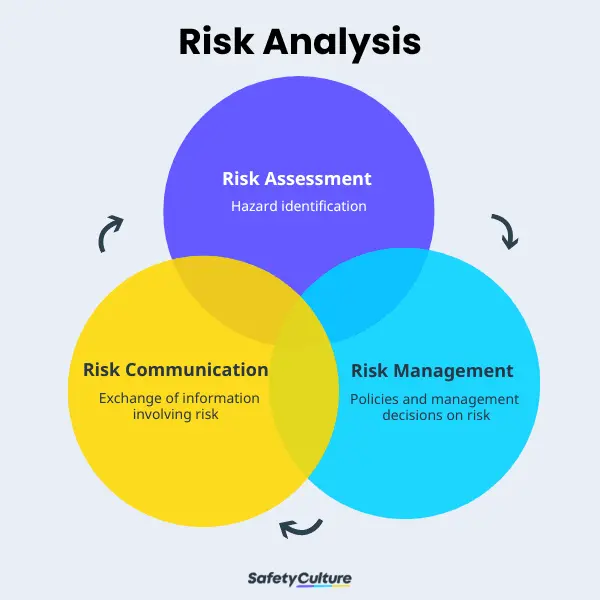Enhancing Operational Efficiency Through the Importance of Risk Management
Enhancing Operational Efficiency Through the Importance of Risk Management
Blog Article
Discovering the Significance of Risk Management for Effective Decision-Making Methods
In the intricate world of business, Risk Management arises as an important element in the decision-making process. The capacity to determine possible risks and opportunities, and strategize accordingly, can mean the difference between success and failing.
Comprehending the Concept of Risk Management
Risk Management, an essential component in decision-making, is usually misinterpreted or oversimplified. Risk Management entails structured and disciplined methods, making use of data and informative assessments. From economic unpredictabilities, legal responsibilities, calculated Management errors, to accidents and natural catastrophes, it attends to numerous threats - importance of risk management.
The Role of Risk Management in Decision-Making Processes
In the realm of tactical preparation and organization procedures, Risk Management plays an integral role in decision-making procedures. It helps in determining prospective hazards and uncertainties that might influence the success of company purposes. By tracing these threats, firms can formulate techniques to reduce their impact, ensuring service continuity and security. Risk Management therefore ends up being a vital tool in decision-making, helping leaders to make informed selections based upon an extensive understanding of the threats involved. It motivates a positive technique, allowing organizations to anticipate and prepare for feasible future scenarios. This dramatically lowers the possibility of negative repercussions, promoting a lot more effective and reliable decision-making approaches. As a result, Risk Management works as a vital component in the decision-making procedures of any type of organization.

How Risk Management Improves Strategic Planning
In the context of calculated planning, Risk Management plays a crucial duty. Starting with the recognition of potential risks, it additionally encompasses the implementation of Risk mitigation actions. The duty of Risk Management is vibrant however not fixed, as it requires consistent tracking and adjusting of strategies.
Identifying Possible Risks

Applying Risk Reduction
Risk mitigation methods can vary from Risk avoidance, Risk transfer, to run the risk of reduction. Each method should be customized to the specific Risk, considering its prospective effect and the organization's Risk resistance. Effective Risk mitigation requires a deep understanding of the Risk landscape and the potential influence of each Risk.
Surveillance and Changing Approaches
Though Risk reduction is a crucial action in strategic planning, continuous surveillance and modification of these techniques is similarly essential. This ongoing process permits companies to identify new risks and reassess existing ones, making sure the carried out techniques continue to be reliable in the ever-changing service setting. It likewise provides an opportunity to evaluate the success of the Risk Management procedures, permitting adjustments to be made where necessary, more improving strategic preparation. Reliable monitoring and adjustment call for the use of analytics and essential performance indicators (KPIs) to gauge performance. These devices provide valuable data-driven insights that can inform strategic decision-making. Tracking and readjusting Risk Management techniques is an important component for enhancing an organization's durability and tactical preparation.
Case Studies: Effective Risk Management and Decision-Making
Worldwide of service and money, effective Risk Management and decision-making frequently function as the pillars of prosperous ventures. One such find out entity is a multinational oil company that reduced financial loss by hedging against fluctuating oil costs. In another circumstances, a technology startup thrived by recognizing and approving high-risk, high-reward techniques in a volatile market. An international financial institution, encountered with governing uncertainties, efficiently navigated the circumstance via positive Risk assessment and dynamic decision-making. These cases highlight the value of sharp Risk Management in decision-making procedures. It is not the absence of Risk, but the Management of it, that typically sets apart effective companies from unsuccessful ones. These cases underscore the crucial role of Risk Management in critical decision-making. importance of risk management.
Devices and Techniques for Effective Risk Management
Navigating the intricate puzzle of Risk Management needs the appropriate set of methods and tools. These devices, such as Risk registers and heat maps, help in determining and assessing potential dangers. Methods consist of both quantitative methods, like sensitivity analysis, and qualitative techniques, such as SWOT analysis. These help in prioritizing threats based upon their potential effect and chance. Risk reaction techniques, a vital element of Risk Management, entail approving, preventing, transferring, or mitigating threats. Tracking and managing dangers, through next regular audits and evaluations, guarantee that the techniques continue to be efficient. With these devices and methods, decision-makers can browse the complex landscape of Risk Management, consequently helping with notified and efficient decision-making.
Future Patterns in Risk Management and Decision-Making Methods
As we explore the vast landscape of Risk Management, it ends up being apparent that the strategies and tools made use of today will proceed to read here advance. The concept of Risk culture, where every member of an organization is mindful and involved in Risk Management, will obtain extra importance. These patterns advertise an even more inclusive and aggressive method towards Risk Management and decision-making.
Verdict

Risk Management thus becomes a vital device in decision-making, aiding leaders to make educated selections based on an extensive understanding of the threats entailed. Risk mitigation techniques can range from Risk avoidance, Risk transfer, to run the risk of reduction (importance of risk management). Effective Risk mitigation needs a deep understanding of the Risk landscape and the potential effect of each Risk. Risk response techniques, a crucial element of Risk Management, entail accepting, preventing, moving, or mitigating threats. The idea of Risk culture, where every participant of a company is mindful and involved in Risk Management, will gain much more prestige
Report this page